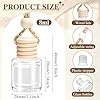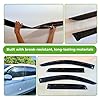Table of Contents
Figuring out how to disable ABS light on Chevrolet Silverado is a question that arises for many owners when that persistent amber warning illuminates the dashboard. It’s crucial to understand from the outset that this light is not a problem in itself; it is a critical warning that a problem exists within your Anti-lock Braking System (ABS).
Simply disabling the light without diagnosing and addressing the underlying cause is not only unwise but could be dangerously irresponsible, as it disables a vital safety warning. A lit ABS light often indicates that the anti-lock function is disabled, meaning your wheels could lock up during hard braking, especially on slippery surfaces, potentially leading to a loss of steering control and increased stopping distances. T
his comprehensive guide will walk you through the correct, safe, and effective process to diagnose the root cause of the illumination and, by fixing the problem, permanently turn off the ABS light on your Chevrolet Silverado, ensuring your vehicle’s safety systems are fully operational.
Understanding Your Silverado’s ABS and Why the Light Stays On
The Anti-lock Braking System is a sophisticated safety feature designed to prevent wheel lockup during heavy braking, allowing the driver to maintain steering control. When you start your Silverado, the ABS light should illuminate briefly as the system performs a self-check. If it passes, the light turns off. If it finds a fault, the light remains on.
A lit ABS light signals that the vehicle’s computer has detected a malfunction within the ABS and has often stored a diagnostic trouble code to help pinpoint the issue. When this light is on, the conventional hydraulic brakes will still function, but the anti-lock feature will be disabled. This means that in a panic stop or on a slippery road, the brakes could lock up the wheels, causing the vehicle to skid.
It’s also important to note that in modern Silverados, the ABS is integrated with other safety systems. Therefore, a malfunction in the ABS can also disable traction control and stability control systems, as they rely on data from the same wheel speed sensors and control module. This is why you may see additional warnings like “Service StabiliTrak” or “Service Traction Control” when the ABS light is on.
Common Causes for the ABS Light in a Chevrolet Silverado
Before attempting to disable the light, you must first identify why it’s on. The issue can range from a simple, inexpensive fix to a more complex component failure. Here are the most common culprits:
Faulty Wheel Speed Sensor
This is, by far, the most frequent cause of an illuminated ABS light. Each wheel has a sensor that monitors its rotational speed and sends this data to the ABS module. These sensors can fail due to exposure to extreme heat, road debris, or corrosion. A single failed sensor is often enough to trigger the light.
ABS Module or Pump Failure
The ABS module is the computer that controls the entire system. It can fail internally due to electrical issues or heat damage. On some older models, the module is separate from the hydraulic pump, while on newer trucks like the 2019+ models with the ZF TRW Integrated Brake Control, they are a single unit. Failure here is a more serious and costly repair.
Damaged Wiring or Poor Connections
The wiring harness that connects the wheel speed sensors to the ABS module can become damaged by road debris, rodents, or simply from wear and tear over time. A broken wire, corroded connector, or poor ground connection can interrupt the signal and trigger the warning light.
Low Brake Fluid Level
Your Silverado’s braking system has a fluid level sensor in the master cylinder reservoir. If the brake fluid level drops too low, it can trigger not only the brake warning light but also the ABS light. This is one of the first and easiest things to check.
Faulty Steering Angle Sensor or Brake Light Switch
The ABS module uses data from multiple sources. A misaligned or faulty steering angle sensor (which tells the module the direction the driver intends to steer) can cause issues. Similarly, a malfunctioning brake light switch can send incorrect data about whether the brakes are applied.
System-Related Issues After Recalls or Service
In some cases, particularly with newer-generation trucks, the ABS light or related stability system warnings can come on after a software update or recall service. Some owners of 2019+ Silverados reported multiple braking system error codes appearing after recall-related software flashes, which sometimes required a subsequent dealer visit for a reflash to resolve the new issues.
Table: Common ABS Light Causes and Symptoms
| Cause | Symptoms | Typical Repair Cost |
|---|---|---|
| Faulty Wheel Speed Sensor | ABS light on, traction/stability control disabled, possible speedometer fluctuation. | Low to Moderate |
| ABS Module Failure | ABS light on, all related stability systems disabled, often with multiple stored codes. | High |
| Damaged Tone Ring | ABS light intermittent, may trigger only at certain speeds. | Low to Moderate |
| Low Brake Fluid | ABS light and brake warning light both on. | Low |
| Blown Fuse | ABS light on, complete loss of system power. | Very Low |
Step-by-Step Diagnosis: How To Disable ABS Light On Chevrolet Silverado
The only correct way to “disable” the ABS light is to fix the underlying problem. This process requires a methodical approach to diagnosis.
Step 1: Perform a Visual Inspection
Start with the simplest checks first.
- Check Brake Fluid: Open the hood and locate the brake fluid reservoir. Check that the fluid level is between the “MIN” and “MAX” lines. Top it up with the correct type of DOT fluid (like GM Part No. 19299570) if necessary.
- Inspect Fuses: Locate your Silverado’s fuse boxes (under the hood, and in the dashboard). Consult your owner’s manual to find the fuses related to the ABS, EBCM, or IBC. Remove and visually inspect them to see if the metal strip inside is broken. On some older models, fuse #3 was for the ABS pump, while on newer T1 platform trucks, users have reported fuse #24 (sometimes labeled “Eboost 1”) as a key fuse for the electronic brake control module.
- Look at the Wheels: With the vehicle safely raised and secured, remove each wheel and visually inspect the wheel speed sensor and its wiring. Look for any obvious damage, cuts, or corrosion on the sensor or its connector. Also, check the tone ring (the notched ring the sensor reads) for damage or excessive debris.
Step 2: Read the ABS Diagnostic Trouble Codes (DTCs)
This is the most critical step for an accurate diagnosis. Guessing which part is faulty can lead to wasted time and money on unnecessary parts.
You will need an OBD-II scanner that can communicate with the ABS module. Basic code readers often only read engine codes, so ensure your tool has ABS functionality.
- Park your Silverado on a level surface in a safe area.
- Locate the OBD-II port under the dashboard on the driver’s side.
- Plug the scanner into the port.
- Turn the ignition to the “ON” position but do not start the engine. If your truck has a START/STOP button, press it twice without pressing the brake pedal.
- Allow the scanner to boot up and connect to the vehicle.
- Select your vehicle (Chevrolet, Silverado, and model year) from the scanner’s menu.
- Navigate to the “ABS” or “Chassis” menu to read the anti-lock brake system codes.
- Write down all the codes that appear. They will look something like “C0035” (Left Front Wheel Speed Sensor Circuit) or “C0281” (ABS Activation Control).
These codes are your roadmap. They tell you which circuit or component the system has flagged as problematic.
Step 3: Address the Specific Fault Code
Once you have the code, you can target your repair.
- For Wheel Speed Sensor Codes: The code will typically point to a specific wheel. Clear the code, drive the vehicle, and see if it returns. If it does, the sensor likely needs replacement. Before replacing it, use a multimeter to check the sensor’s resistance (compare to specifications, often 800-2000 ohms) to confirm it’s dead.
- For Module or Pump Codes: These are more serious. Research your specific code and vehicle year to see if there are known issues or technical service bulletins (TSBs). This may require professional diagnosis or module repair/replacement.
- For Communication or Low Voltage Codes: Check all relevant fuses and inspect the wiring harness and connectors for the ABS module for damage or corrosion. A poor ground connection is a common culprit.
Step 4: Clear the Codes and Test Drive
After making the necessary repair, you need to clear the codes from the module’s memory. This is what will finally turn off the ABS light.
- Go back into the ABS menu on your scanner.
- Select the “Clear Codes” or “Erase Codes” function.
- The scanner will confirm when the codes are cleared, and the ABS light on your dashboard should turn off.
- Take the vehicle for a test drive. The system will re-run its self-check. Ensure the light does not come back on during the drive. If it does, the original issue may not be fully resolved, or there may be an additional, related problem.
Advanced Troubleshooting and Professional Repair
Some situations require more advanced knowledge or tools.
Dealing with an Intermittent ABS Light
If the light comes on and off randomly, it is often a sign of a wiring issue. The problem may only occur when hitting a bump or when turning. In this case, a thorough inspection of the wiring harness for a loose connection or a wire that is frayed and occasionally shorting is necessary. Reproducing the condition while the vehicle is on a lift and wiggling the harnesses can sometimes help locate the fault.
ABS Module Repair vs. Replacement
A faulty ABS module can be very expensive to replace new from a dealer. However, there are third-party services that will repair your existing module for a fraction of the cost. This typically involves sending your unit to them, where they resolder connections or replace internal components.
When to See a Professional Mechanic
If you have reached the limits of your comfort, tools, or diagnostic skills, it’s time to consult a professional. This is especially true if:
- You lack an ABS-capable scanner.
- The diagnostic codes point to the integrated brake control module or pump.
- You have checked and replaced obvious components but the light and codes persist.
- The braking system feels abnormal (e.g., a stiff brake pedal, unexpected brake application).
Conclusion
Knowing how to disable ABS light on Chevrolet Silverado is fundamentally about understanding vehicle safety systems and applying a logical, diagnostic approach. There is no magic button or secret fuse pull that safely makes the light disappear; the only true solution is to identify and rectify the fault that triggered the warning. By starting with simple visual checks, progressing to reading diagnostic trouble codes with an appropriate scanner, and methodically addressing the underlying issue—be it a faulty wheel speed sensor, damaged wire, or low brake fluid—you can restore your Silverado’s ABS, traction control, and stability control to full function. This not only extinguishes the warning light but, more importantly, ensures that your vehicle’s critical safety systems are ready to protect you and your passengers when you need them most. Remember, a functioning ABS is not just a convenience; it is a vital layer of safety for modern driving.
Key Takeaways
- The ABS light is a warning, not the problem itself; disabling it without fixing the cause is dangerous.
- A faulty wheel speed sensor is the most common cause of an illuminated ABS light.
- Proper diagnosis requires an OBD-II scanner capable of reading ABS codes to avoid guessing and unnecessary parts replacement.
- The ABS is integrated with traction and stability control; a fault can disable all three systems.
- Always perform a test drive after clearing codes to ensure the problem is truly resolved.
Sources
- GM-Trucks Forum: ABS Fuse Location
- GM-Trucks Forum: 2 New Recalls – Braking System Issues
- Youcanic: Chevrolet ABS Light Stays On – Diagnosis Guide
- CarPartSource: Chevrolet Silverado ABS System Components
















































